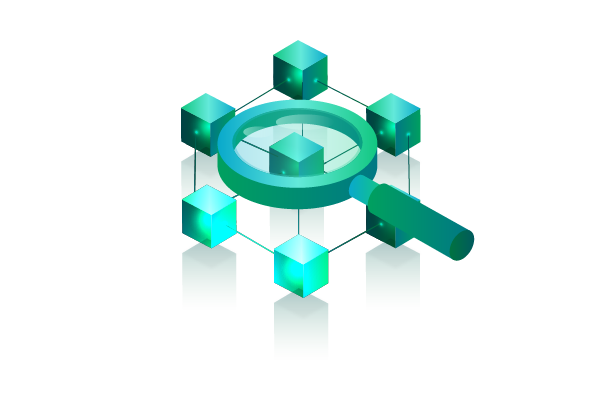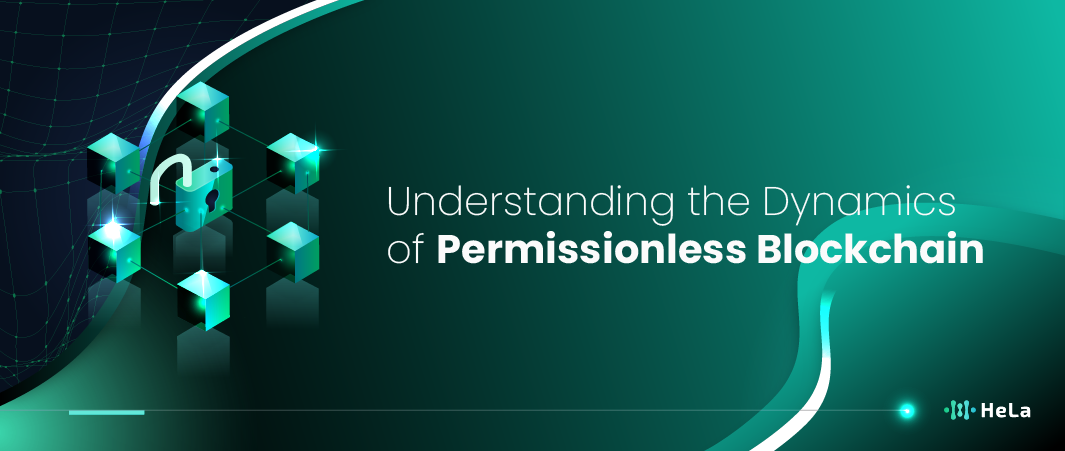In permissionless blockchain networks, anyone can participate without needing approval from a central authority, fostering a truly decentralized and open system. These networks rely on consensus mechanisms like Proof of Work (PoW) or Proof of Stake (PoS) to validate transactions and ensure security. Through cryptographic techniques and decentralized governance, permissionless blockchains create transparent, trustless environments where users can interact directly, without the need for intermediaries. This article dives deep into the key stakeholders, including miners, validators, and developers, who collectively maintain the blockchain ecosystem.
As we explore the future of permissionless blockchains, we’ll touch on advancements in scalability, interoperability, and governance, which are shaping the next generation of decentralized networks. From the potential of cross-chain solutions to the growing role of Decentralized Autonomous Organizations (DAOs), the future is bright for permissionless blockchains. Whether you’re new to the concept or looking to expand your knowledge, this article offers valuable insights into how these networks work, their key characteristics, and what lies ahead. Keep reading to uncover the full potential of permissionless blockchain technology and how it could transform industries and digital economies worldwide.
What is Permissionless Blockchain?
Permissionless Blockchain is a type of blockchain network where anyone can participate without needing prior approval from a central authority. This openness is one of its most defining characteristics, making it accessible to users worldwide. Anyone with an internet connection can join the network, validate transactions, or create new blocks. The decentralized nature of permissionless blockchains contrasts with traditional systems, where control is often centralized in a single organization or authority.
One of the key features of a permissionless blockchain is its security and transparency. Transactions on this type of blockchain are visible to all participants, ensuring transparency in the system. The consensus mechanisms used, such as Proof of Work (PoW) or Proof of Stake (PoS), allow the network to validate transactions and prevent fraud without needing a central authority. This means that even though anyone can participate, the network remains secure through cryptographic techniques and the consensus of the participants.
However, with openness comes challenges. Permissionless blockchains, like Bitcoin and Ethereum, often face scalability issues because anyone can participate, leading to a large volume of transactions. As more users join, the network can become slower, and transaction fees may rise. Additionally, because there’s no central control, upgrading the network or reaching consensus on changes can be slow and complex. This is where the decentralized governance model can sometimes become cumbersome, as decisions must be made collectively by the community.
Despite these challenges, permissionless blockchains represent a revolutionary shift in how we think about trust, ownership, and collaboration. They enable true decentralization, giving power back to individuals rather than centralized institutions. This open, transparent, and secure system has the potential to transform various industries, from finance to supply chain management, by reducing reliance on intermediaries and promoting peer-to-peer interactions.
How Does Permissionless Blockchain Works?
How Permissionless Blockchain Works can be broken down into several key components that define its operation. At its core, a permissionless blockchain operates on a decentralized network, where no single entity controls the system. Anyone can join the network as a participant, validator, or miner without needing special permission. The blockchain consists of blocks of data, which are connected in a chain-like structure. Each block contains a batch of transactions, and once a block is added to the blockchain, it becomes immutable, meaning the information cannot be changed. This ensures transparency and trust in the system.
The process of validating transactions in a permissionless blockchain is achieved through a consensus mechanism. The most common mechanisms are Proof of Work (PoW) and Proof of Stake (PoS). In PoW, participants (also known as miners) compete to solve complex mathematical puzzles, and the first to solve it gets to add a new block to the blockchain. This method secures the network but consumes significant computational power. In PoS, participants validate transactions based on the amount of cryptocurrency they “stake” or hold, which is more energy-efficient. These consensus mechanisms ensure that even without central control, the network remains secure, and all transactions are legitimate.
Also Read: Top 10 Benefits of Blockchain Technology For Business
One of the most significant aspects of permissionless blockchains is their reliance on cryptography. Cryptographic techniques, such as hashing and digital signatures, are used to secure the data and ensure that transactions are authentic. For instance, every transaction is signed by the sender using a private key, which can be verified by others using the sender’s public key. This cryptographic layer ensures that only the legitimate owner of an asset can transfer it, and it protects the network from attacks, such as double-spending or fraudulent transactions.
Finally, because permissionless blockchains are decentralized, they rely on a distributed network of nodes to maintain the system. These nodes are spread across the globe, and each node has a copy of the entire blockchain. This distribution of data adds another layer of security, as there is no single point of failure. If one node goes offline, the network continues to operate seamlessly. The combination of decentralization, consensus mechanisms, and cryptography makes permissionless blockchains powerful tools for enabling trustless transactions and peer-to-peer interactions without the need for intermediaries.
Key Stakeholders in Permissionless Blockchain Networks

Key Stakeholders in Permissionless Blockchain Networks play essential roles in maintaining, securing, and advancing the blockchain ecosystem. These stakeholders interact in a decentralized environment where each participant contributes to the system’s functionality and growth without centralized control. Understanding the roles of these stakeholders is crucial for grasping how a permissionless blockchain operates.
Miners/Validators
In permissionless blockchains, miners or validators are responsible for validating transactions and adding them to the blockchain. In Proof of Work (PoW) systems like Bitcoin, miners solve complex cryptographic puzzles to add new blocks, earning rewards for their efforts.
In Proof of Stake (PoS) systems, validators are chosen based on the amount of cryptocurrency they hold and stake in the network. Both roles are critical in maintaining the security and integrity of the blockchain by ensuring that only valid transactions are confirmed.
Node Operators
Node operators run the software that maintains the blockchain network. Nodes store a complete copy of the blockchain, validate transactions, and propagate new blocks across the network.
In permissionless blockchains, anyone can become a node operator, contributing to the decentralization and resilience of the network. Node operators ensure that the network remains transparent and accessible by distributing the blockchain data globally, preventing a single point of failure.
Developers
Developers are the architects of the blockchain’s underlying technology. They create and maintain the code that runs the blockchain, including smart contracts, decentralized applications (dApps), and updates to the protocol.
Developers in permissionless blockchains often work in open-source communities, where anyone can contribute to the codebase. Their work is crucial in ensuring the blockchain remains secure, scalable, and adaptable to new use cases and technologies.
Users
The end-users of permissionless blockchains are individuals or organizations who interact with the blockchain for various purposes, such as transferring cryptocurrency, executing smart contracts, or using decentralized applications (dApps).
Users are essential stakeholders because they drive the adoption and utility of the blockchain. They provide the demand that incentivizes miners, validators, and developers to continue contributing to the network. Users also play a role in governance, as some permissionless blockchains allow users to vote on protocol changes or participate in decentralized decision-making processes.
Characteristics of Permissionless Blockchain

Characteristics of Permissionless Blockchain highlight the distinct features that set it apart from other types of blockchain networks. These characteristics make permissionless blockchains appealing for applications requiring transparency, decentralization, and global accessibility. Below are the key traits that define permissionless blockchains:
Open Participation
One of the most defining characteristics of a permissionless blockchain is that anyone can join the network without needing permission from any central authority. This open participation enables users to become validators, miners, or simply transact on the network.
There are no barriers to entry based on geographic location, identity, or credentials, making the network globally accessible. This inclusivity fosters decentralization, as a diverse range of participants can contribute to the blockchain’s operations.
Decentralization
Permissionless blockchains operate in a decentralized manner, meaning no single entity controls the network. Instead, it is maintained by a distributed network of nodes, each holding a copy of the entire blockchain.
Also Read: Top 10 Blockchain Marketing Companies to Consider in 2024
Decisions are made collectively by the participants, often through consensus mechanisms like Proof of Work (PoW) or Proof of Stake (PoS). This decentralization ensures that the system remains resilient, transparent, and resistant to censorship or manipulation by any single party.
Transparency and Immutability
In permissionless blockchains, all transactions are publicly visible, and once recorded on the blockchain, they are immutable. This means that anyone can audit the blockchain’s history, ensuring transparency and accountability.
The immutability of data, ensured by cryptographic hashing, prevents tampering or altering of transaction records, making the blockchain a reliable and trusted ledger. This characteristic is particularly valuable in scenarios where trust between parties is essential, such as in financial transactions or supply chain tracking.
Security and Trustlessness
Security in permissionless blockchains is achieved through cryptographic techniques and consensus mechanisms. Trustlessness refers to the idea that participants do not need to trust each other or any central authority to interact on the network.
Instead, they rely on the blockchain’s protocols and cryptography to secure transactions. By eliminating intermediaries and allowing direct peer-to-peer interactions, permissionless blockchains reduce the need for trust while maintaining a high level of security through decentralized validation and consensus.
The Future of Permissionless Blockchain

The Future of Permissionless Blockchain is poised to transform industries by pushing the boundaries of decentralization and trustless systems. As blockchain technology matures, permissionless networks are expected to play a crucial role in shaping the digital economy. Innovations in scalability, interoperability, and governance will likely be at the forefront of this evolution. Solutions like layer 2 scaling (e.g., rollups) and sharding aim to address current limitations in transaction speed and cost, making permissionless blockchains more efficient and accessible for widespread adoption. This will allow more complex applications, such as decentralized finance (DeFi) and decentralized autonomous organizations (DAOs), to operate seamlessly on these networks.
In the future, interoperability will be a significant focus for permissionless blockchains. Currently, many blockchain networks operate in isolation, limiting their potential. However, the development of cross-chain bridges and protocols will enable different blockchains to communicate and share assets. This interoperability will create a more interconnected blockchain ecosystem, where assets and information can flow freely between networks. As a result, permissionless blockchains will become even more versatile, supporting a wider range of applications that require interaction across multiple chains, such as decentralized exchanges (DEXs) and multi-chain DeFi platforms.
Governance will also evolve in permissionless blockchains, with a shift towards more decentralized decision-making processes. As these networks grow, the need for effective governance becomes critical to ensure that upgrades, security measures, and community interests are aligned. DAOs, which enable decentralized governance, will likely play a larger role in shaping the future of permissionless blockchain networks. This will empower communities to have a direct say in the development and management of the networks they participate in, reducing the influence of centralized entities and ensuring that decisions are made in a transparent and democratic manner.
Finally, mass adoption of permissionless blockchains will depend on improving user experience and regulatory clarity. For mainstream users and businesses to fully embrace permissionless networks, the technology must become more user-friendly, with intuitive interfaces and seamless integration into existing systems. Moreover, as governments and regulators continue to assess the implications of blockchain technology, clear and balanced regulations will be essential to fostering innovation while protecting users. The future of permissionless blockchains is promising, with the potential to reshape industries by enabling open, transparent, and decentralized systems that empower individuals and businesses globally.
Conclusion
Permissionless Blockchain: Concepts, Mechanisms, and the Future encapsulates the transformative power of open, decentralized systems that are reshaping the digital landscape. By allowing anyone to participate without central approval, permissionless blockchains promote transparency, security, and trustless interactions. These networks rely on consensus mechanisms, cryptographic techniques, and the collaboration of key stakeholders like miners, node operators, and developers to ensure that transactions are valid and the system remains robust. As these networks evolve, their potential to drive innovation and reshape industries grows, particularly through advancements in scalability, interoperability, and decentralized governance.
Looking forward, the future of permissionless blockchains holds immense promise. From enhancing efficiency with layer 2 scaling solutions to fostering interconnected ecosystems through cross-chain protocols, the possibilities are vast. Decentralized Autonomous Organizations (DAOs) will further empower communities to take an active role in governance, ensuring that these networks remain true to their decentralized roots. As user experience improves and regulatory clarity increases, permissionless blockchains are set to become a cornerstone of the digital economy. Embracing this technology could open new opportunities for peer-to-peer interactions and decentralized systems that transcend traditional boundaries.
Disclaimer: The information provided by HeLa Labs in this article is intended for general informational purposes and does not reflect the company’s opinion. It is not intended as investment advice or a recommendation. Readers are strongly advised to conduct their own thorough research and consult with a qualified financial advisor before making any financial decisions.

